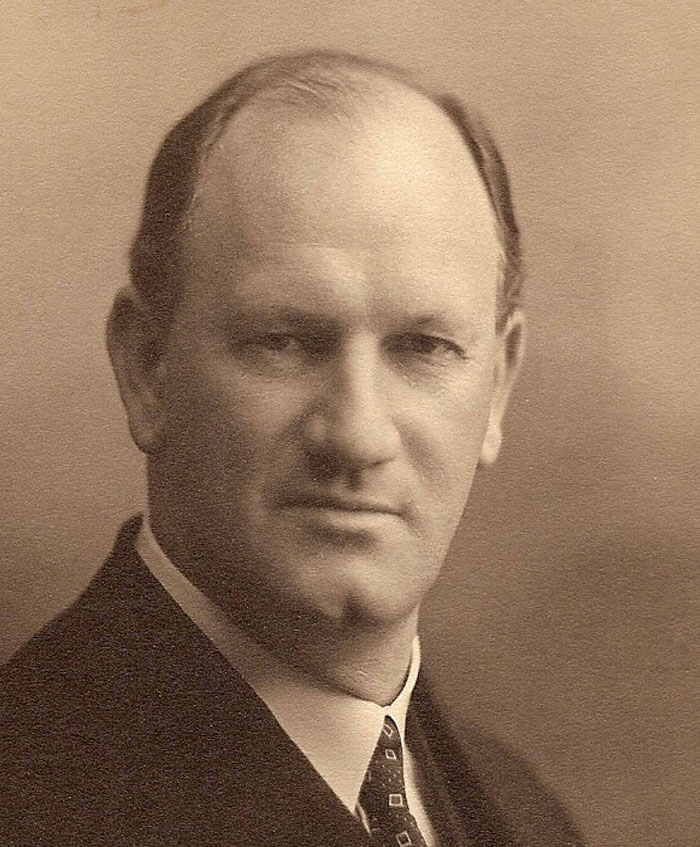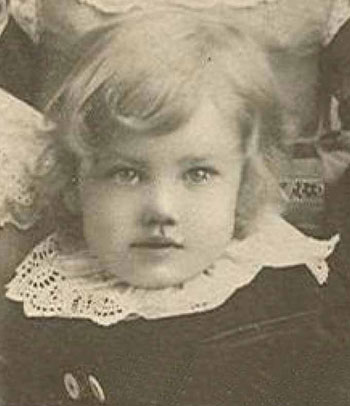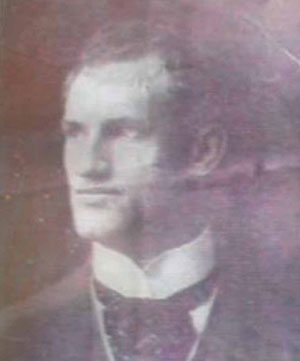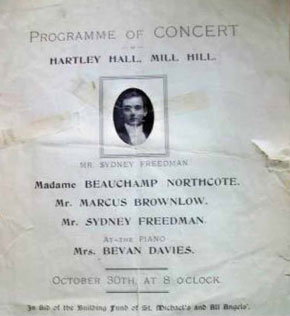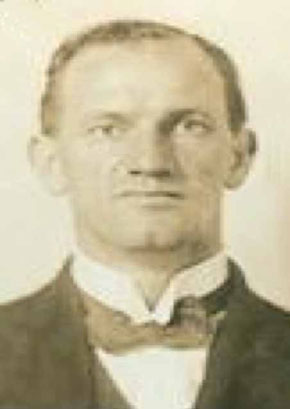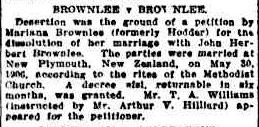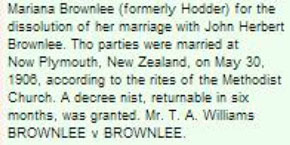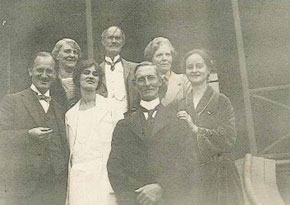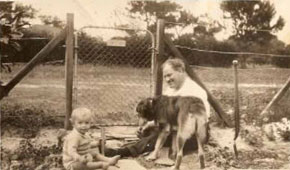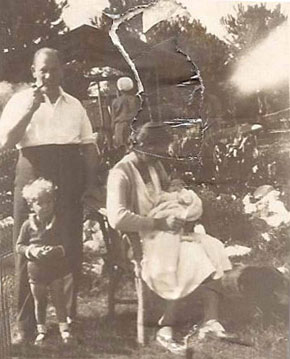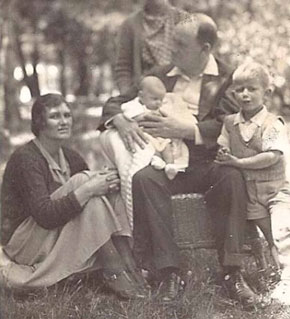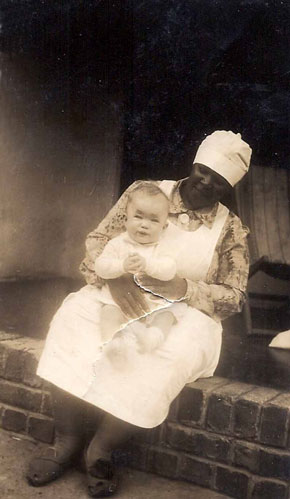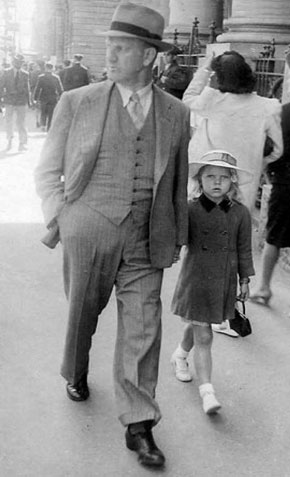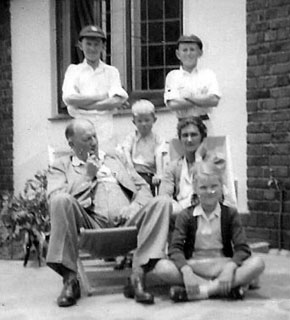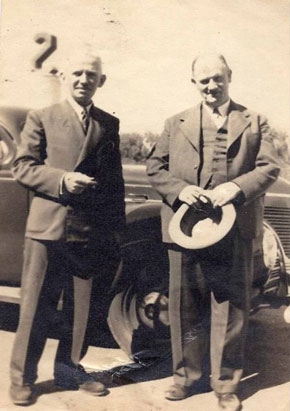John Herbert Brownlee
The story of John Herbert Brownlee who travelled from New Zealand to Australia and South Africa. His marriage to Nerene Blanche Innes Brownlee brought together two Brownlee familes. Nerene's ancestors were John Brownlee & Catherine de Jager, missionaries to South Africa from Scotland and John's ancestors were from Ireland.
John Herbert Brownlee (known as Bert) - Submitted by Michael Charles Churchill Brownlee, son of of John Herbert Brownlee
Most Brownlee roots can be traced back to Scotland and it is said that some may be able to be traced back to the Brownlow family of Belton House, Lincolnshire.
Bert’s roots, however, were in Ireland – his parents were Thomas Brownlee and Elizabeth (McKeeman) who, in 1875, had married in Armagh, Northern Ireland. About 1882 they emigrated to New Zealand. Thomas was a schoolmaster and organist. He taught in Canterbury schools for his first 4 years in NZ. In 1886, he and Elizabeth were appointed Master and Matron of the Lyttleton orphanage on a combined salary of £121.0.0 p.a. Lyttleton was close to Christchurch. Thomas was a gifted teacher and singing was his special interest.
Bert was born on May 23, 1885 and no doubt received an excellent education. This was a protestant family and, inheriting an interest in singing from his dad, Bert probably sang in the church choir.
At this time many were stricken with tuberculosis and this Brownlee family was no exception. Bert’s elder sister Elizabeth Ann Ella died in 1892 at age 15 and just 2 years later he lost his mother Elizabeth. In 1902 his elder brother Llewellen also succumbed to the disease and died at age 20.
After leaving school at age 15, Bert travelled to Stratford in the North Island where he was articled to CJ Bolstead for 3 years as a draughtsman. After further apprenticeships in Palmerston North, Wanganui and Napier, in 1905 he bought the practice of WJ Quigley. Here he set up an independent business in Gisborne, aged only 20. In 1906 he was tasked with designing the Erskine building. It was completed in 1908 and had deep verandahs fenced with filigree lacework. The Erskine building is listed as one of Gisborne’s historic buildings. He also designed the Baptist Tabernacle in Palmerston road.
Apart from architecture, Bert had an abiding love of opera. His love of singing led him to meet Marianna Hodder. Marianna was also an opera singer. This common interest lead to friendship and their marriage in 1906. Marrianna was also an opera singer.
They were married in the Methodist church, New Plymouth, Bert’s father’s new home. There were no children and judging from Bert’s subsequent travels without Marianna, the marriage seems to have petered out fairly soon.
In 1908, Bert’s father, Thomas, died at Mangatainoka, NZ aged 69.
It seems that the lack of an architectural qualification might have been holding Bert back and he determined to leave Gisborne and journey “Home” to London, UK in search of an ARIBA (Associate of the Royal Institute of British Architects). After a jolly boat trip he arrived at Tillbury docks in July 1911 and joined AG Bond, BA Oxon, ARIBA and C Batley ARIBA in Gower St. He started his studies at the Heatherly school of Fine Art, attending lectures at London University.
He was soon in touch with Sir Aston Webb, (later Sir) Banister Fletcher, Leonard Stokes, Reginald Blomfield who was president of the RIBA and Curtis Green (president of the Architectural Association). He much appreciated being able to use the libraries of the RIBA and British Museum.
During 1912 he took and passed examinations to secure his ARIBA and then was taken on, first as draughtsman and then manager in the office of Banister Fletcher. His particular impressions were that the “Quantities” system, though unpopular, was absolutely necessary in modern architecture, and also that artful use of concrete in architecture would become a major feature of the future.
He left the Fletcher office to study design under the tutelage of Messrs Dunn, Watson, Curtis and Green, sketching many of London’s beautiful old buildings.
Concurrent with his architectural work, Bert was pursuing his interest in music, and he sang at a number of important engagements making his debut at a concert at the Queens Hall. The Pall Mall gazette commented that “Mr Brownlow’s voice and method made an excellent impression…his tones are well under control. With an easy animation of manner and excellent diction his singing was both interesting and sympathetic.” The Express declared that “Mr Brownlow sang with a strong sense of dramatic effect though he has yet to gin greater control over his voice.”
At Mill Hill he was the lead baritone in a North London concert given along with Madame Beauchamp Northcote and Sydney Friedman.
In 1913 he gave a lecture on the principals of Italian voice production to the annual conference of choirmasters, music teachers and organists at Derby.
He left England for Sydney in June 1914, Joining concrete company FJ Swann as a manager. A year later he had moved into his own premises at 21 Bond St where he allied with architect Alfred Hooks. Bert became president of the Association of Architects of NSW in 1920. During this time he struck up a great friendship with Norman Kent, who also counted singing as his hobby.
In 1921 he was issued with a British passport and decided on another trip to the UK. On stopping over in Cape Town he was approached by someone at the local University who had heard of his qualifications and link to Banister Fletcher. He was offered the job of first lecturer at a new architectural faculty. Bert had developed a particular interest in hospital design and soon after this led him to meet his new wife-to-be, remarkably, someone totally unrelated of the identical surname. She was Nerene Blanche Innes Brownlee, a nursing sister at Cape Town’s Somerset Hospital.
This combination of circumstances persuaded Bert to abandon his travels and settle in Cape Town. He became closely associated with classes organized by Groves, an association which was formalised the next year with the establishment of the Cape School of Architecture. Bert became principal of this school which was contained within the Michaelis School of Fine Art.
In 1923 he represented the Cape School of Architecture at the conference of Architectural Education in Durban.
